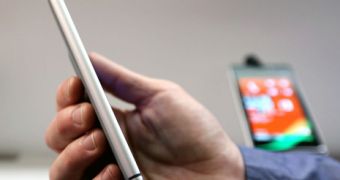Nokia Lumia 925, the latest Windows Phone 8 smartphone from the Finnish mobile phone maker, is the first of them to arrive on shelves with metal as part of its outer design, and Nokia has decided to provide some details on the matter.
According to the company, the aluminum frame that Lumia 925 sports was meant not only to add robustness to the device, but also as part of its antenna system.
“This looks gorgeous, and adds robustness to the phone. But what’s worth noting is that it does not impact on the strength of the signal you’ll be able to receive on the phone,” a post on Nokia Conversations reads.
“On the Lumia 925, the aluminum ring around the phone actually acts as parts of the phone’s radio antenna system.”
The aforementioned post also explains that the main antenna is placed in the bottom area of the phone, and that there are two other antennas placed at the top of the device, and that stripes separate them from the other parts of the metal ring.
Additionally, the blog post explains that Nokia has included specific technology inside the antenna so as to maximize its use of radio bands, regardless of whether on GSM, WCDMA or LTE networks.
“It will also adjust the ‘balance of power’ between the antennas according to how you’re holding your phone,” the blog post continues.
“The end result is that you’ll get equally good radio performance out of the Lumia 925 as you would from a wholly polycarbonate phone, plus the most important benefit in the form of a stunning design.”
However, the company also notes that users will be able to reduce the signal strength when deliberately using both hands to cover every edge of the phone. This will also make it harder to operate the buttons of the device.

 14 DAY TRIAL //
14 DAY TRIAL //